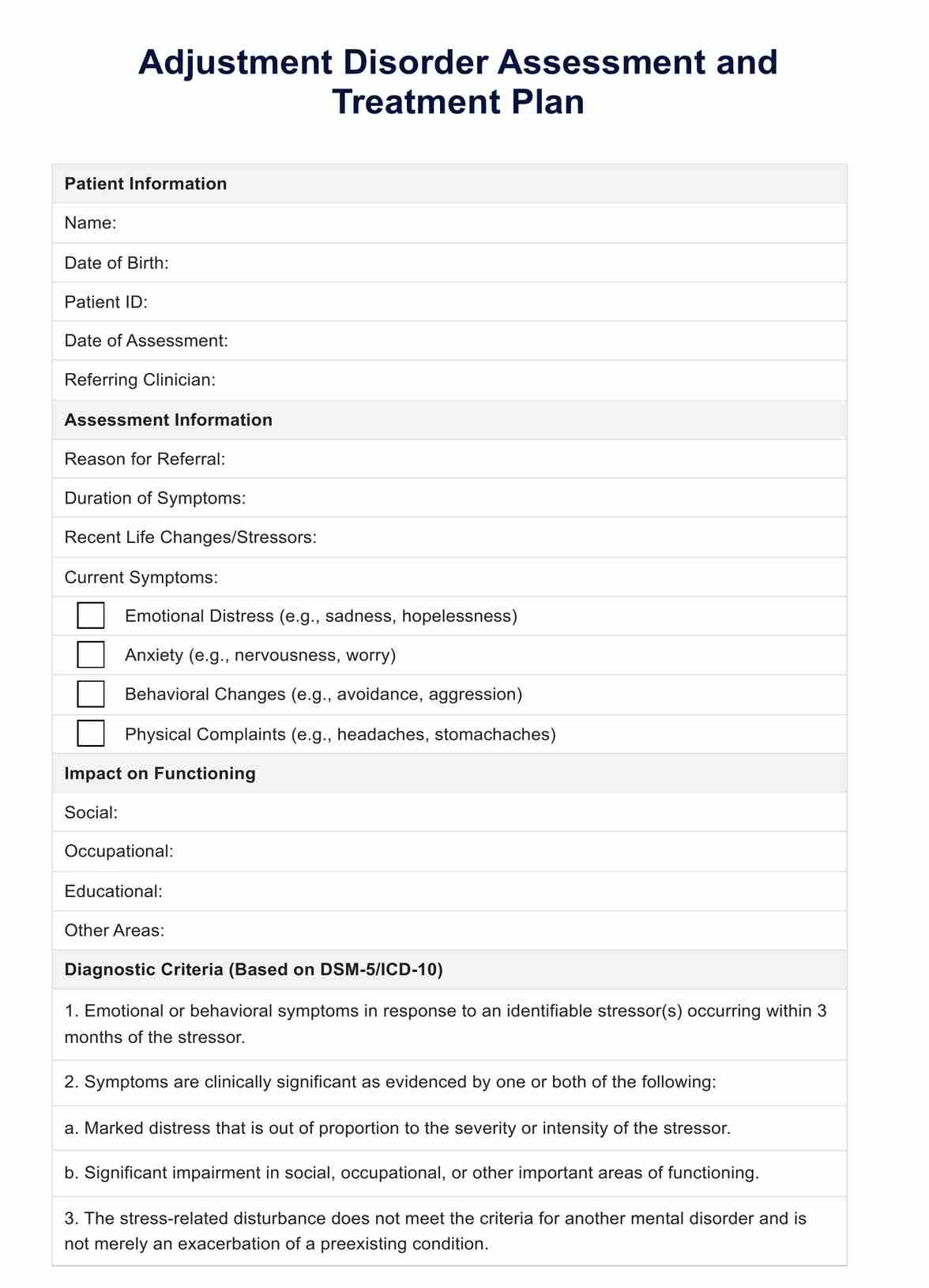Cognitive-behavioral therapy (CBT) is often considered the most effective therapy for adjustment disorder, focusing on changing negative thought patterns and developing coping strategies.

Adjustment Disorder PDF
Navigate the complexities of adjustment disorder with our comprehensive PDF guide. Explore symptoms, diagnosis criteria, and treatment options here.
Use Template
Adjustment Disorder PDF Template
Commonly asked questions
Mindfulness exercises, relaxation techniques, and regular physical activity can be beneficial for managing symptoms of adjustment disorder.
Adjustment disorder can be diagnosed when an individual experiences significant emotional or behavioral symptoms in response to an identifiable stressor, typically within three months of the stressor's occurrence.
EHR and practice management software
Get started for free
*No credit card required
Free
$0/usd
Unlimited clients
Telehealth
1GB of storage
Client portal text
Automated billing and online payments











